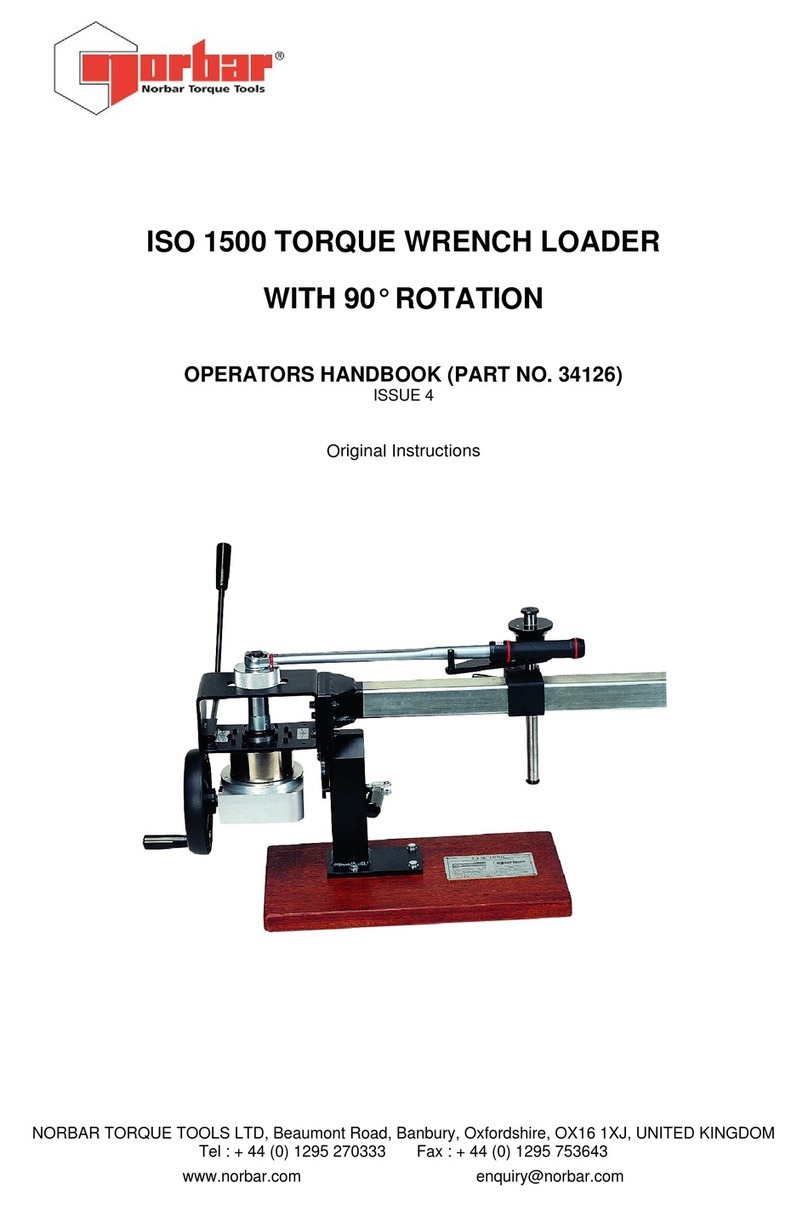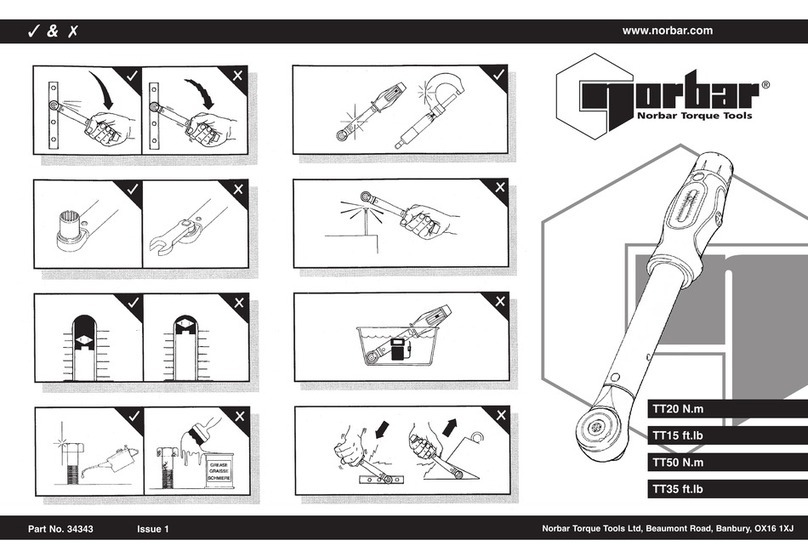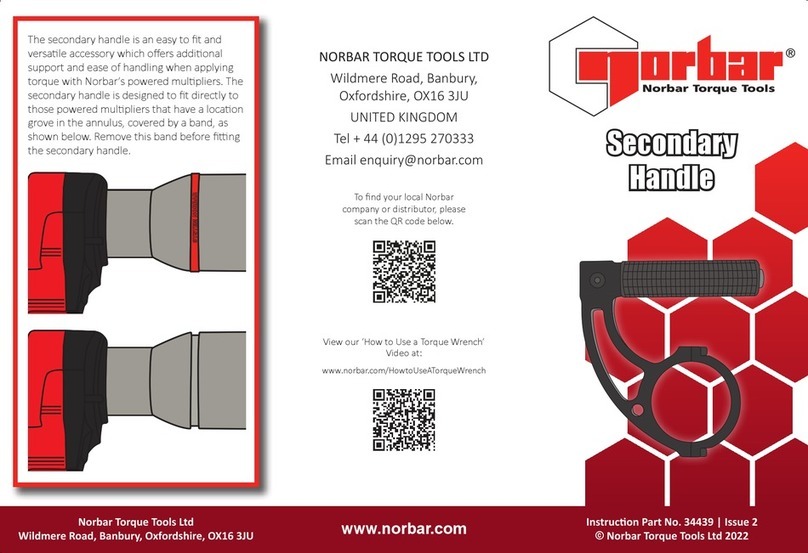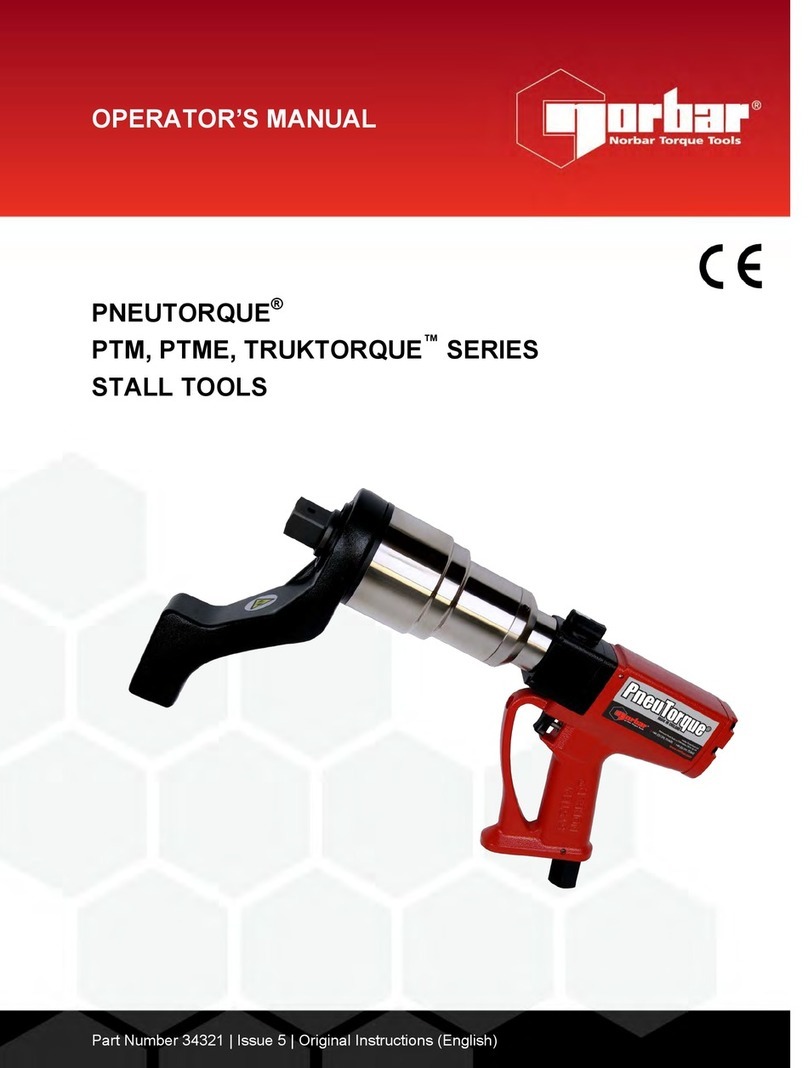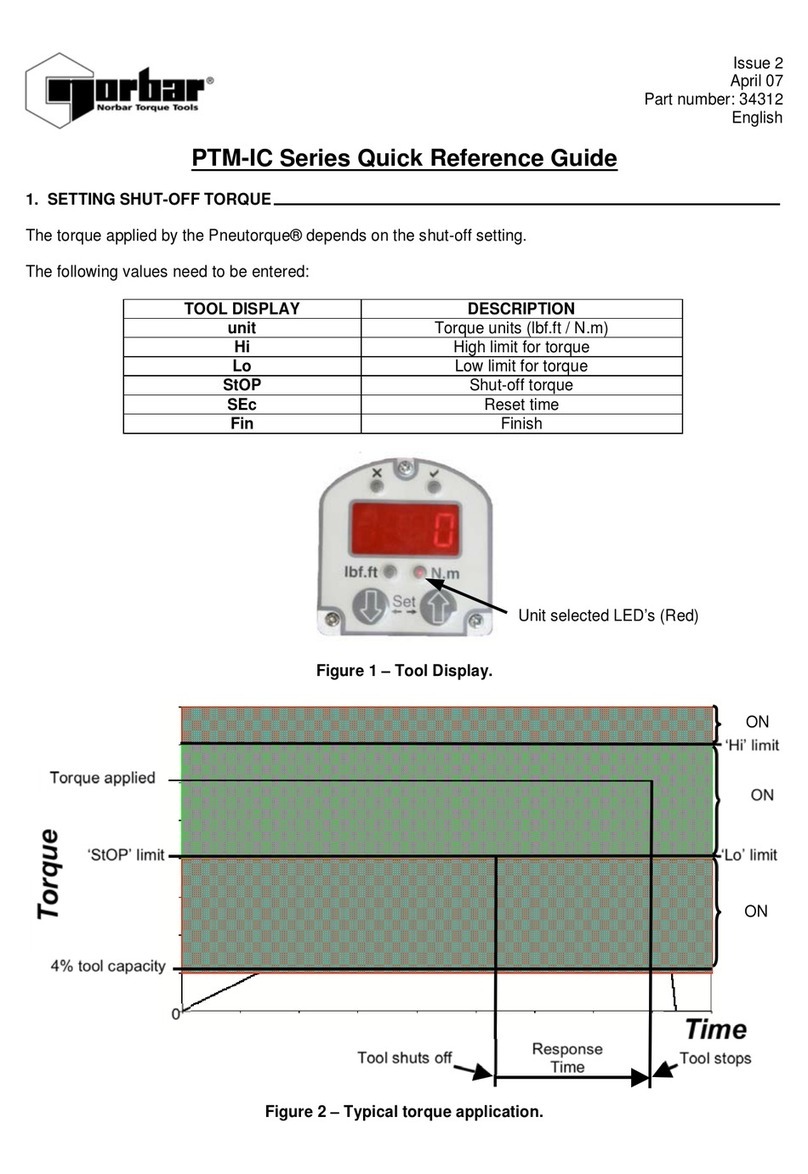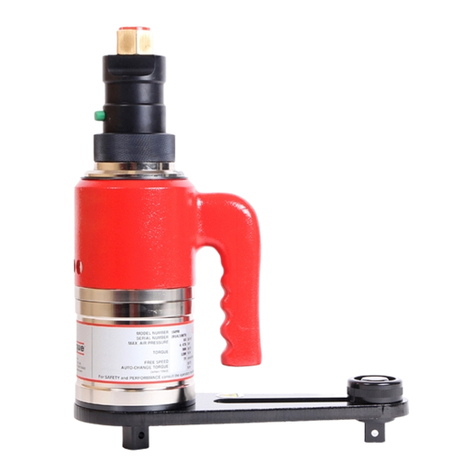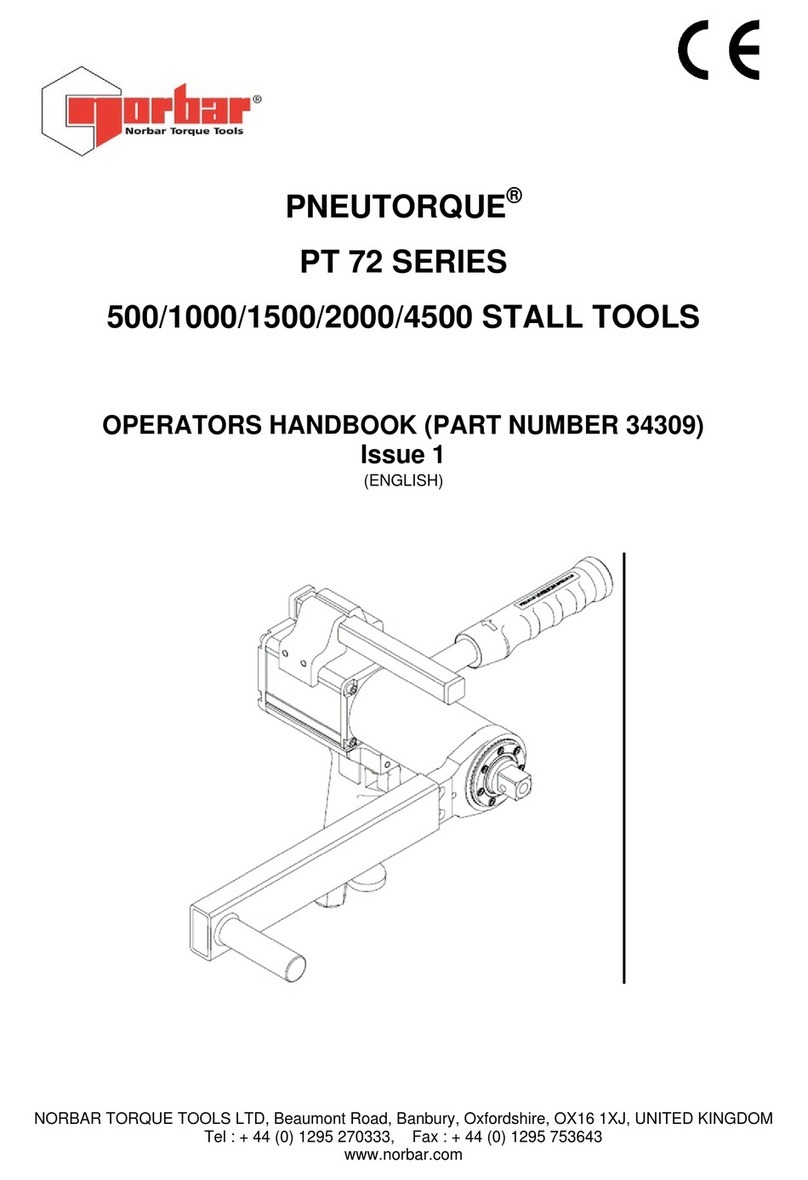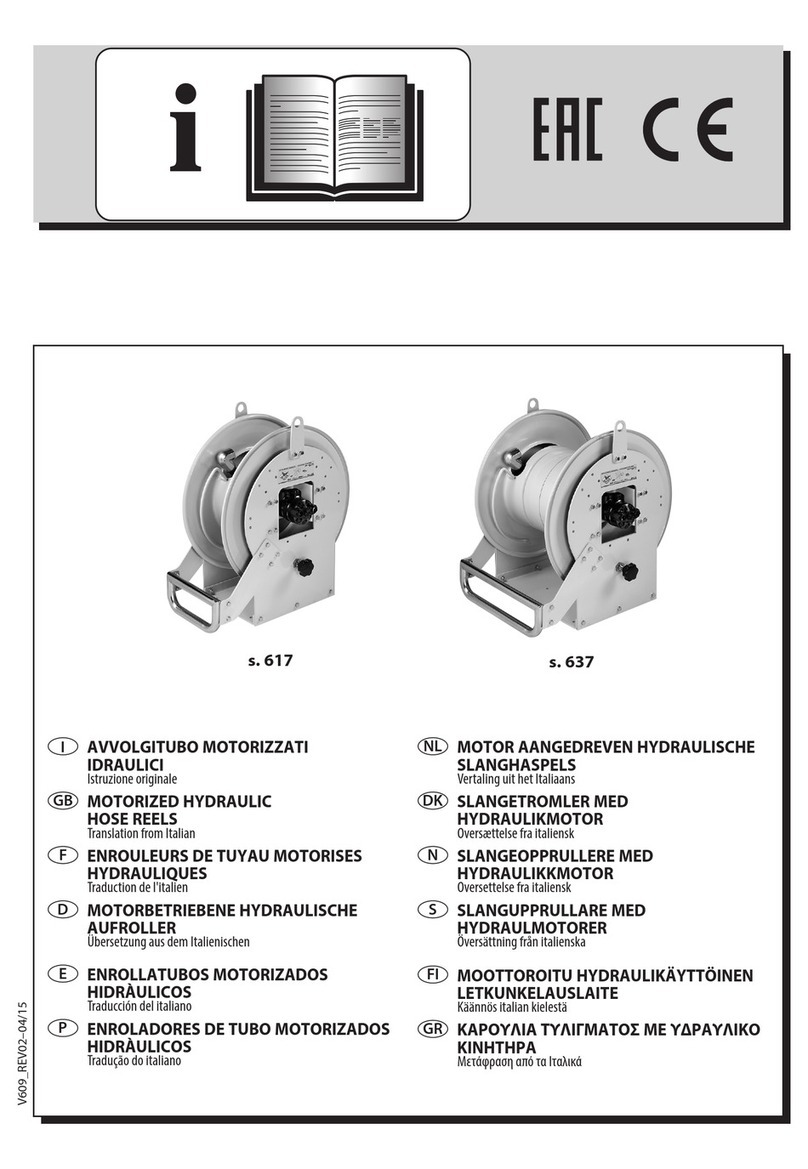
Noise Hazards:
• Unprotected exposure to high noise levels can cause permanent, disabling, hearing loss and other
problems, such as tinnitus (ringing, buzzing, whistling or humming in the ears). Therefore a risk
assessment and implementation of appropriate controls for these hazards are essential.
• Appropriate controls to reduce the risk may include actions such as damping materials to prevent
workpieces from “ringing”.
• Use hearing protection in accordance with employer's instructions and as required by occupational
health and safety regulations.
• Operate and maintain the assembly power tool for threaded fasteners as recommended in the
instruction handbook, to prevent an unnecessary increase in noise levels.
• If the assembly power tool for threaded fasteners has a silencer, always ensure it is in place and in good
working order when the assembly power tool for threaded fasteners is operating.
• Select, maintain and replace the consumable/tool as recommended in the instruction handbook, to
prevent an unnecessary increase in noise.
Vibration Hazards:
• Exposure to vibration can cause disabling damage to the nerves and blood supply of the hands and
arms.
• Wear warm clothing when working in cold conditions and keep your hands warm and dry.
• If you experience numbness, tingling, pain or whitening of the skin in your fingers or hands, stop using
the assembly power tool for threaded fasteners, tell your employer and consult a physician.
• Operate and maintain the assembly power tool for threaded fasteners as recommended in the
instruction handbook, to prevent an unnecessary increase in vibration levels.
• Do not use worn or ill-fitting sockets or extensions, as this is likely to cause an increase in vibration.
• Select, maintain and replace the consumable/tool as recommended in the instruction handbook, to
prevent an unnecessary increase in vibration levels.
• Support the weight of the tool in a stand, tensioner or balancer, if possible.
• Hold the tool with a light but safe grip, taking account of the required hand reaction forces, because the
risk from vibration is generally greater when the grip force is higher.
Additional Safety Instructions for Pneumatic Power Tools:
• Air under pressure can cause severe injury:
o Always shut off air supply, drain hose of air pressure and disconnect tool from air supply when not
in use, before changing accessories or when making repairs;
o Never direct air at yourself or anyone else.
• Whipping hoses can cause severe injury. Always check for damaged or loose hoses and fittings.
• Cold air shall be directed away from the hands.
• Air lines with safe disconnect couplings, as supplied, are recommended. Whenever universal twist
couplings (claw couplings) are used, lock pins shall be installed and whipcheck safety cables shall be
used to safeguard against possible hose-to-tool and hose-to-hose connection failure.
• Do not exceed the maximum air pressure stated on the tool.
